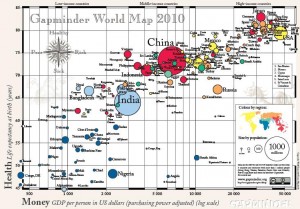Modern doctors are often deeply over-invested in the use of drugs, and amazingly ignorant of the power of the human immune system, when supported by a healthy diet and optimal nutrition, to defeat disease.
They sometimes exhaust their repertoire of drugs without ever considering using nutritional supplements to support the patient’s immune defense.
An extraordinary illustration comes from New Zealand. It began when Alan Smith, a New Zealand farmer, contracted swine flu:
He caught the Swine Flu (probably while on a fishing trip in Fiji), so badly that his lungs had “white out”, which is to say they were so full of fluid that they didn’t show up on an x-ray. The doctors also said he had got leukemia and he ended up being put on a life support machine.
The doctors told the family the machine should be turned off … [1]
The diagnosis of leukemia is suspicious. Both infections and leukemia lead to “leukocytosis” or a very high white blood cell count. In one case the white blood cells are multiplying to fight the infection, in the other a malignant population is multiplying. The difference is that in leukemia the population is monoclonal, i.e. all the new white blood cells are genetically identical, while in normal people with infections the white blood cells are created with genetic diversity. (Keywords for those who wish to investigate: T-cell antigen repertoire and B-cell immunoglobulin repertoire.)
As subsequent events showed, the leukemia “diagnosis” was mistaken. I wonder if it was made just for “family management” – in order to help persuade the family his case was hopeless and support the recommendation to end life support.
… but the family asked that he be given high dosages of Vitamin C. After a fight (one of many), one of the doctors agreed. Alan began getting better; his lungs showed pockets of air. Then he began to get worse and the family found out the doctors had stopped the Vit C.
Many more fights ensued, the patient getting better while having the Vit C, and getting worse when he was taken off. Alan’s wife describes one of the doctors sitting back in his chair, arms folded, rolling his eyes, looking at the ceiling, telling her that no way could the vitamin C be helping. The family hired a lawyer, forcing the doctors to continue the vit C treatment (albeit in slow dosage, until he got better enough to eat and his wife brought along sachets of large dosage herself for him to take).
Eventually Alan fully recovered, no trace of leukemia even. [1]
He should have been given high doses of vitamin D and iodine as well. Iodine supports leukocyte respiratory bursts of reactive oxygen species which destroy pathogens; vitamin C supports respiratory bursts by recycling glutathione and providing antioxidant protection for leukocytes against their own respiratory bursts, and also supports anti-viral immunity; vitamin D creates antimicrobial peptides that kill many pathogens.
Other possibly beneficial supplements in cases of elevated leukocyte counts due to infection: selenium, to support both glutathione and iodine/thyroid function; iron, for myeloperoxidase (respiratory burst enzyme) and catalase (antioxidant defense); N-acetyl cysteine (for glutathione production) and glutathione; zinc and copper (for the anti-oxidant zinc-copper superoxide dismutase).
Thank goodness the family had the sense to try vitamin C, and that that was enough for him to recover. It would have been a shame if he died for lack of vitamin D and iodine.
New Zealand was a pioneer of socialized medicine in the English-speaking world. Economists say that people respond to incentives; one wonders if the doctors were more motivated to tend to the interests of the bureaucrats who controlled their budgets, than to the health of the family and patient who weren’t paying them. Perhaps “free” medical care has unexpected costs.
References
[1] “Indictment of Our Medical Profession,” New Zealand Conservative, http://nzconservative.blogspot.com/2010/08/indictment-of-our-medical-profession.html; hat tip to Jewel at http://health.groups.yahoo.com/group/infection-cortisol/message/1760.












Recent Comments